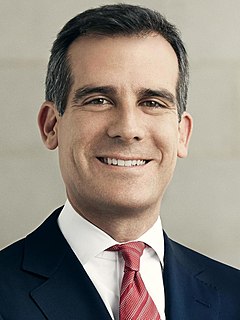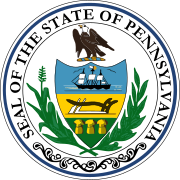
The Mayor of the City of Los Angeles is the official head and chief executive officer of Los Angeles, California, United States. The officeholder is elected for a four-year term and limited to serving no more than two terms. Under the Constitution of California, all judicial, school, county and city offices, including those of chartered cities, are nonpartisan.

The 1979 San Diego mayoral election was held on September 18, 1979 to elect the mayor for San Diego. Incumbent Pete Wilson stood for reelection for a third term. As the result of a voter-approved amendment to the City Charter to align mayoral elections with state elections, the winner of the election stood to receive an extended five-year term.

Philadelphia's municipal election of November 5, 1963, involved contests for mayor, all seventeen city council seats, and several other executive and judicial offices. The Democrats lost vote share citywide and the Republicans gained one seat in City Council, but the Democratic acting mayor, James Hugh Joseph Tate, was elected to a full term and his party maintained their hold on the city government. The election was the first decline in the Democrats' share of the vote since they took control of the city government in the 1951 elections, and showed the growing tension between the reformers and ward bosses within their party.

The 1839 Philadelphia mayoral election saw John Swift return to office for a seventh overall non-consecutive term.

The 1840 Philadelphia mayoral election saw John Swift reelected to office for his eighth overall non-consecutive term.

The 1841 Philadelphia mayoral election saw the election of John Morin Scott.

The 1842 Philadelphia mayoral election saw the reelection of John Morin Scott.

The 1843 Philadelphia mayoral election saw the reelection of John Morin Scott to a third consecutive term.

The 1844 Philadelphia mayoral election saw the election of Peter McCall.

The 1845 Philadelphia mayoral election saw John Swift return to office for a ninth overall non-consecutive term.

The 1846 Philadelphia mayoral election saw John Swift reelected to office for a tenth overall non-consecutive term.

The 1847 Philadelphia mayoral election saw John Swift reelected to office for an eleventh overall non-consecutive term.

The 1848 Philadelphia mayoral election saw the reelection of John Swift to a twelfth overall non-consecutive term.

The 1849 Philadelphia mayoral election saw the election of Joel Jones.

The 1850 Philadelphia mayoral election saw the reelection of Charles Gilpin.

The 1851 Philadelphia mayoral election saw the reelection of Charles Gilpin.

The 1852 Philadelphia mayoral election saw the reelection of Charles Gilpin to a third consecutive term.

Elections are currently held every two years to elect the mayor of Manchester, New Hampshire.

Beginning shortly after the city's incorporation as a city in 1846, elections have been held in the mayor of Manchester, New Hampshire. The following article provides information on the elections for mayor in the city during the 19th century.






